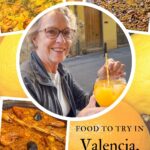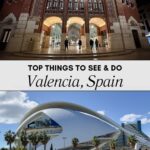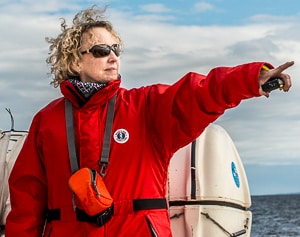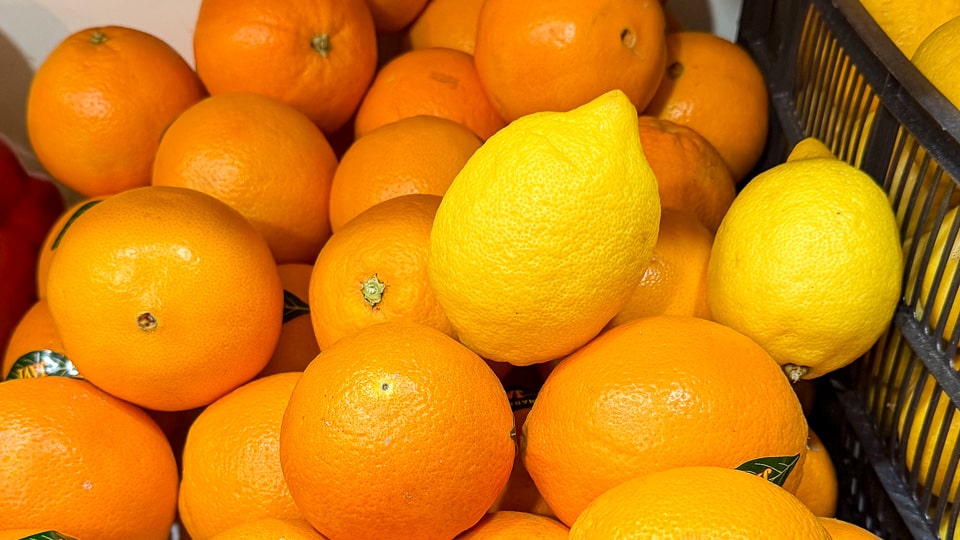
Valencia has a story all its own. While it’s the third largest city in Spain, after Madrid and Barcelona, it feels smaller and more rural, surrounded as it is by some of Spain’s most fertile agriculture.
The personality of the city is unique; Valencia could live with any number of tag lines. It’s a port city, a culinary capital, an architecture and design center, a green city, a college town, a beach resort, and home to an amalgam of historic, religious, and secular cultural festivals. It has an international feel; 17 percent of the population is international in this metro area of nearly 1.8 thousand people. The city itself is home to about 800,000 people.
With its own “Valenciano” language, a dialect associated with Catalan, regional pride extends from language to cuisine to its geographic setting. Couched between the Mediterranean Sea to the east and the huertas (produce farms) to the west, with rice-growing wetlands of the Natural Park of Albufera to the south, it’s no wonder that this is the birthplace of paella, the rice dish that has become the national dish of Spain.
20th and 21st Century development has moved Valencia even further to the forefront of Spanish cities. Read on to discover various way you can explore this city and uncover some of its secrets as well as its popular highlights. We've included many links to specific venues, but for a lovely overview of all Valencia has to offer, see Spain Tourism's Valencia pages, too.
Note: The city of Valencia was spared damage by the floods of October 29, 2024, though provincial areas to the south were badly hit. What saved the city was the reorienting of the Turia River after massive floods in 1957. The original path of that river is now the long band of parkland – more than five and a half miles of green space and trails – that winds through the city.
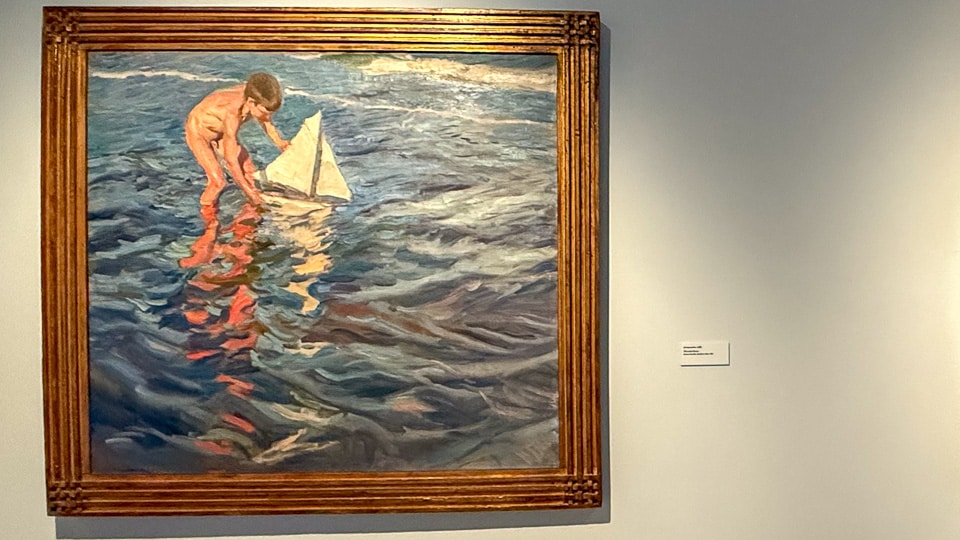
Table of Contents
History
Valencia’s importance goes back thousands of years, and its historic center with narrow pedestrian streets is an inviting window to the past. On the surface, though, Valencia appears newer than other Spanish cities, due to significant rebuilding after Spain’s Civil War.
Valencia’s location on the sea at the mouth of the Turia river was the main draw for the initial Roman settlement around 140 BC. Over the Middle Ages, as was the case through much of the Iberian Peninsula, power balances shifted from the Romans to the Visigoths, Moors, the Church, and Catholic Kings.
The famous Castilian, El Cid, with a combined Christian and Muslim Army, was instrumental in re-conquering the city from the Berbers in 1094. It was a major trading center at that time, and subject to changing control until 1238, when it surrendered to James I of Aragon.

The first printing press on the Iberian Peninsula was in Valencia, an indicator of its political and business importance. But, foreshadowing its suppression under Franco, Valencianos (like Catalans and Aragonese) were prohibited from sharing in commerce with the newly ‘discovered’ Americas, as that was controlled by the Castilians. The decline in fortunes lingered into the 18th Century, and even then, economic recovery based on manufacturing of silk and tiles was countered by further power struggles, including the Napoleonic Wars. (The plantations of orange trees weren’t introduced until the late 1800s.)
It's not surprising, then, that the region developed a strong bourgeoisie class and sense of resistance. In the 20th Century, Valencia carved its own path, becoming a capital of Republican Spain in 1936. It was heavily bombarded in the Civil War, and later suffered under the dictatorship of Franco, who forbade the Valencian language.
After Spain became a democracy in 1977, Valencia was established as a new autonomous region in 1982. It’s one of Spain’s 17 autonomous regions.
Valencia Museums and Attractions
City of Arts and Sciences
The City of Arts and Sciences could keep you busy for days. In fact, when we first visited Valencia about ten years ago, we focused almost exclusively on this area. The site itself is thrilling, with the airy, white, futuristic buildings arranged around turquoise reflecting pools. Designed by native son Santiago Calatrava, the complex opened in 1998 and has since grown from three structures to eight, including bridges.
We each have dozens of photos of the site; it is intriguing from every vantage point. We’ve only spent time in the interactive Science Museum, and that is about to be renovated, so we’ll be going back for more. Do check calendars for special events at the City of Arts and Sciences and experience this world within a city. You can see more photos and information about the spectacular site in our earlier post.
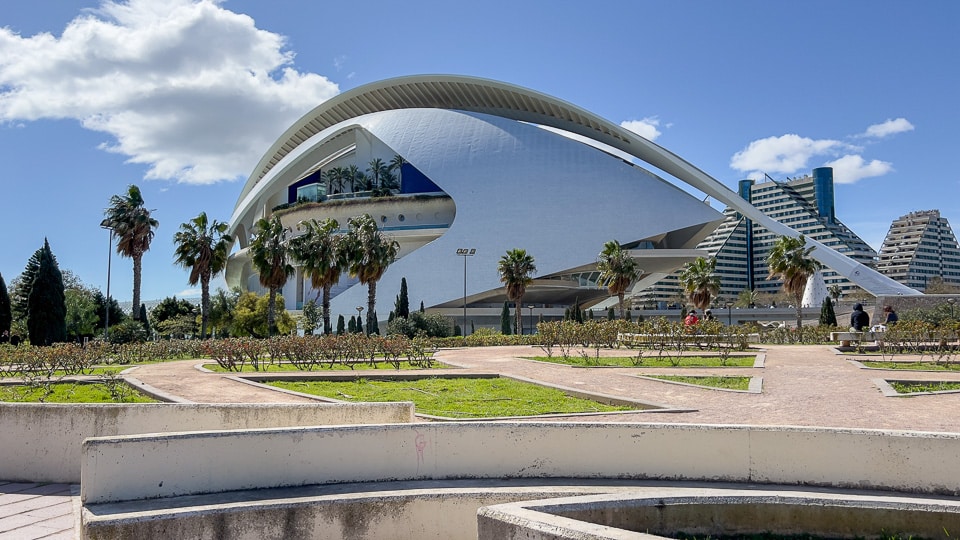
L’Hemisféric. The Hemisphere, the first building to open on the site, looks like a big eye, complete with a roof that slides open like an eyelid. It houses an IMAX theater and planetarium.
Museu de les Ciéncies Principe Felipe. The Science Museum includes permanent and temporary exhibits, plus the popular Zero Gravity and Marvel Superheroes exhibitions. The building resembles a whale skeleton.
L’Umbracle. This arbor type structure provides a shady walkway and sculpture garden. Covering a car park, it’s a main entrance to the City of Arts and Sciences.
L’Oceanográfic. An open-air oceanographic park, Europe's largest aquarium. The building is shaped like a water lily. But the aquarium goes on and on, underground.
Palau de les Arts Reina Sofía. This opera house opened in 2005 and hosts a variety of performing arts. The iconic structure looms large, but stop and look often, from near and far, above and below.
L’Ágora. The most recent addition to the City, completed in 2009, is a covered plaza for concerts and sporting events.
UNESCO World Heritage Sites and Events
La Lonja de la Seda. The old Silk Exchange located near the Mercado Central in old town is a great place to start your tour of Valencia. The building is a rare example of gothic architecture for civil use. Built between 1482 and 1533, it includes the spacious Contract Hall, the Tower, and the Pavilion of the Consultate of the Sea, with an amazing ceiling from the 15th Century. The very good audio guide is included with your ticket. Declared a UNESCO Monument in 1996.
Valencia’s other UNESCO World Heritage Site designations relate to cultural heritage:
Las Fallas Festival. The famous annual event, March 14-19, was inscribed in 2016. Read our separate post dedicated to this outstanding spring festival.
Tribunal de las Aguas. This long-standing weekly meeting, dating back a thousand years, is designed to resolve any water management issues – so essential to rice growing and agricultural cooperation. The Tribunal hearings are held in the Plaza de la Virgen beside the Cathedral. Viewers will hear the brief pronouncement and see the affected parties stand for photos. The oral arguments have already been heard privately, and the decisions are final. Another Tribunal takes place in Murcia.
Manual Bell Ringing. We weren’t aware of this additional UNESCO recognition when we were there, so we didn’t pay proper attention to this example of the city’s early communication system. With reservations, because space is limited, you can visit the Miguelete, the Cathedral's iconic bell tower where you can witness the manual bell ringing and see the eleven bells there. They include the oldest and heaviest bells in Spain.

Museums
Faller Museum. Fallas monuments are complicated scenes with multiple characters and a message to convey. One little character or vignette from each main monument is submitted on the eve of the Fallas festival for judging and potential pardon from the fires. The one ninot pardoned each year ends up in this museum. So it’s a great collection and history of the Fallas. Entry is inexpensive, and you’ll see not only how the Fallas monuments construction has changed over time, but also a collection of portraits of the Falleras Mayors, the annually selected ambassador of the event. Whether or not you’ve attended Fallas, this museum is a must to get a sense of the UNESCO recognized cultural event.
Centre del Carme CCCC. The Carme Center is one of Valencia’s premiere contemporary art spaces. Expect Valencia-centric exhibitions which add context to the city’s art scene while also advancing it. We were lucky to see the art of the Santaeulalia brothers who’ve been involved in so many top prizes for their Fallas designs. Jose Santaeulalia, whose Fallas design was featured in the prominent Plaza Ayuntamiento in front of Valencia’s Town Hall, spent most of his career with the Lladró porcelain design studios. The museum, with a quiet courtyard and orange trees, is housed in the historic former Royal Monastery of Our Lady of the Carmen, founded in 1281.
Museum of Bellas Artes. Valencia’s Fine Arts Museum is just across the park form the historic city center, in the imposing 17th Century St. Pius V Palace. The classic art museum focuses on 14th – 17th Century works organized by century. You’ll find a Velazquez self-portrait and paintings by Goya and El Greco. It took some asking to find the annex galleries, but do check them out for the 19th and 20th Century work.
Fundación Bancaja. We left Bellas Arts wanting to see more by Valencia-born artist Sorolla, and found a great display in the exhibit halls of the Fundación Bancaja, along with exhibits of two other contemporary artists. Don’t miss this compact worthwhile gallery.
Centro Arqueológico de la Almoina. L'Almoina Archeology Center, just behind the Cathedral, is often overlooked, or more literally walked over. From outside, you can peer down through a water-covered glass roof to see a portion of the ruins below. But enter to discover a larger-than-expected display of the site's former monuments. The efficient museum uncovers Roman, Visigoth, and Arab structures, plus remarkable artifacts including burial jewelry, ceremonial pottery, and decorative porticos. Though the pre-Roman city is gone, vestiges from nearly every era since then are on layered display here.
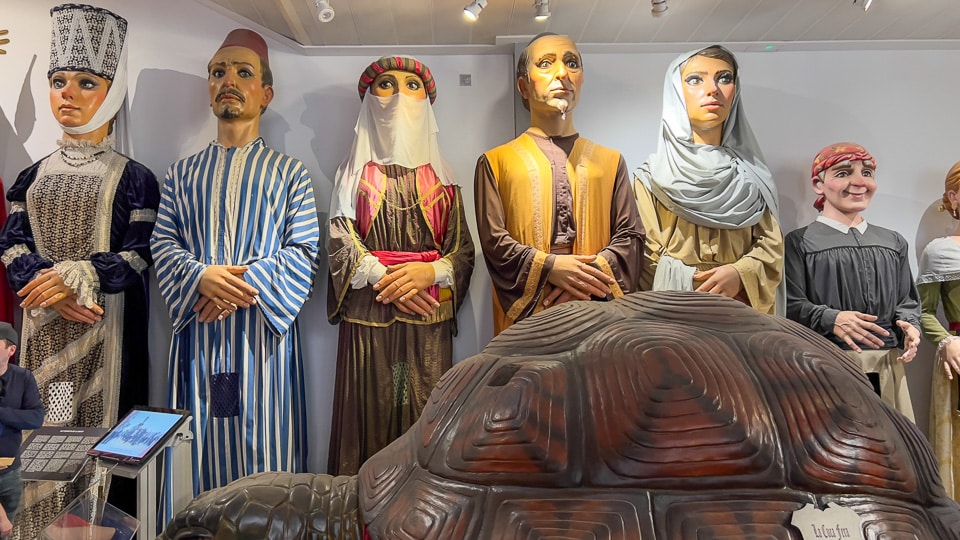
Corpus Museum. Count yourself lucky if you happen upon this museum hidden in plain sight in the Carmen neighborhood. It’s home to the carts and giant figures used in celebration of Corpus Christi Day, celebrated on the eight Sunday after Easter. Corpus Christi has been the major religious festival in Valencia since the 14th Century. The museum is also called the House of Rocks, referring to the massive horse-drawn carriages that lead Corpus Christi processions. The carts on display, laden with religious and symbolic figures, represent every century of the festivals. Several sets of giant figures, or “big heads,” are stored here, too. One set of giants depicts, for example, Christian, Jewish and Muslim couples, so that various parts of the world are involved in the annual celebration.
Museo de Soldaditos de Plomo. Another interesting museum nearby, and another that probably isn’t on your top 10 guidebook list, is the Museum of Lead Toy Soldiers. The setting in the barrio del Carmen neighborhood is part of the charm.
National Museum of Ceramics. By contrast, this is on the lists of top attractions, and with good reason. Here you can follow the history of ceramics in Valencia, going back to examples from a thousand years ago. The art of the tiles is nearly overwhelmed by the ornate palace in which the museum resides. The historic estate had been enlarged and redecorated many times over to achieve today’s baroque spectacle. But continue through all the rooms and you’ll be treated to fine examples of porcelain, textiles and other decorative arts. We were lucky to view a temporary exhibit by displaced Ukrainians, exhibiting the similar designs they’ve discovered between their own and the Valencian heritage.
Lladró Factory and Showroom. But if you want to see some of the best porcelain in the world, you’ll head to the Lladró factory and showroom for a guided tour. Guided tours of Lladro’s factory show the porcelain art process from molds to assembly to painting and firing. Lladro’s porcelain figures have long been collectors items. Today, they showcase custom designs, light fixtures and home decor, and jewelry, in both classic and contemporary styles.
Centro de Arte Hortensia. This contemporary art center is housed in a former 17th Century Baroque palace, a place I happened upon because I chose an alternate way back to my hotel one afternoon. Some of the art is designed and constructed specifically for this space, so it becomes a true immersive experience. The museum also reveals layers of city history, including fragments of the Roman circus and remnants of the Jewish Quarter which were both located below this palace at one time. Contemporary art and archaeology all at once is a great combination.
IVAM. The Valencia Institute of Modern Art opened in 1989 as Spain’s very first modern art center. We had no plan to visit, but were nearby and enjoyed a light lunch in the adjacent restaurant. The museum was a wonderful surprise, with three distinct exhibits (featuring Soledad Sevilla, Manolo Gil, and photographer Gabriel Cualladó when we were there). Serendipity.

Churches
Iglesia de San Nicolas. The best church stop in Valencia, this two-in-one church (for both Saints Nicolas and Juanes) is called the Sistine Chapel of Valencia. A very good audio guide is included.
The Valencia Cathedral and adjacent Basilica of the Virgin of the Forsaken, a destination for pilgrims, are both worth visiting, too. The Cathedral's chapel with the Holy Grail and the Miguelete bell tower (Micalet in Valencian Spanish) draw visitors; a Goya painting in one of the chapels will be an added surprise.
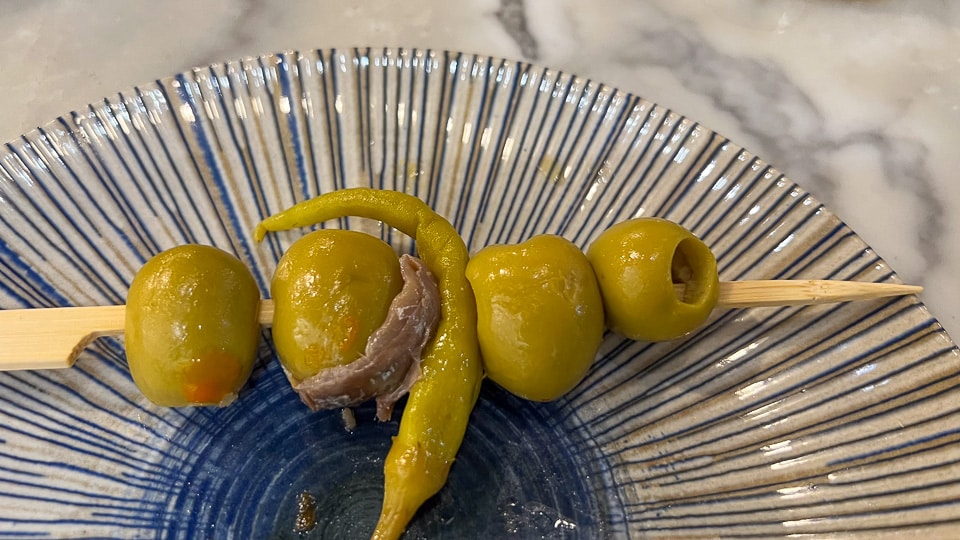
Food Halls/Markets
No, we do not live by art museums alone. Valencia is known for it's paella rice dishes and also for its fertile agriculture. So being around food was one of our priorities.
See the separate section below for some restaurant listings.
Central Market. Certainly one of the highlights of Valencia is the Mercado Central. This market is one of the best you’ll find in Europe, both because of the architecture and size of the market, and for the quality and range of the fresh produce sold there. This is a true market, with stalls selling fresh fruits and vegetables, nuts and legumes, dairy and cheeses, fish and meats. A few stalls sell prepared foods. Very little space is devoted to the one or two businesses that serve food to the few who can squeeze onto a stool at the counter. But if you don’t buy food inside, you can always find a nearby café to prepare your calamari for you.
Mercado de Colón. The Mercado de Colón, in the midst of Valencia’s main shopping district, has been renovated from its original market status to the more contemporary cluster of restaurants, bars, and coffee shops. By day, we recommend you visit one of the two horchaterías for a refreshing sweet tiger nut drink, typical of Valencia. Find patio seating, lounges, or restaurants to linger later in the day. A cheese monger, butcher, and produce vendor offer Valencia’s freshest foods, while a few merchants sell gift items under the roof of the two-level open-air market.
Mercat de la Imprenta. A very fun conglomeration of tapas bars and international restaurants in the spacious guts of a former printing plant. With over 20 vendor stalls, it’s now the largest gastronomic market in Valencia.

Valencia Club Cocina. Neither food hall nor market nor restaurant, The Valencia Club Cocina is an essential stop for any food-lover’s visit to Valencia. Specifically, here’s the place to take a cooking class. Even though we’ve been making paella for years (mostly a seafood version), our minds were blown by watching (and helping) with the preparation of a traditional Paella Valenciana. For the record, that is (usually) made with chicken, rabbit, flat green beans, large white beans, artichokes, garlic, tomato, saffron, paprika, and rice. And maybe some snails tossed in for flavor.
We learned, above all, that Valencianos are very generous with their paella know-how. Classes extend to all sorts of rice preparations and to sushi, Asian, Peruvian, Italian and other international dishes. Check out classes for children, too. While we made the paella, we also managed to cook an excellent tortilla Española (potato omelette) and a cake! For the full range of classes click the link that starts this entry. For the paella experience specifically, here's the English language site.
Parks and Notable Public Places
Valencia is one of the most green cities in all of Spain. With 300 days of sunshine, on average, you can imagine that the city’s open spaces and beaches are lively with people of all ages walking, running, cycling, playing. Valencia was designated the European Green Capital in 2024 for its commitment to sustainability. That means it is committed to balancing tourism with protection of natural resources.
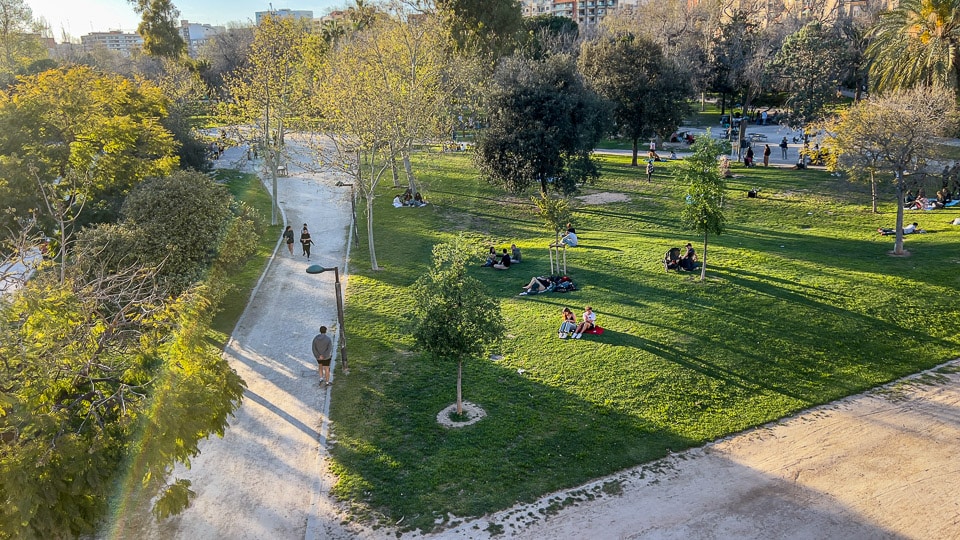
Turia Gardens. As mentioned above, rerouting of the Turia River after floods in 1957 created a marvelous green space flowing through the city. Turia Gardens features walking and cycling trails, playing fields, dog parks, protected nature areas, ponds, fountains, and the popular Gulliver Park playground. It culminates in the open spaces of the City of Arts and Sciences. That and the 18 bridges which cross the park (from 15th Century to contemporary structures) offer great urban views the length of the park.
Jardines del Real. The Royal Garden and Viveros Garden, adjacent to the Museum of Fine Arts and just across the Turia Gardens from the historic city center, was originally established by the Arabs and contained an enormous Royal Palace, long gone. It is in the classic, landscaped style, with walking paths tracing manicured gardens, sculptures and fountains. Free entry.
Botanic Gardens. The Botanical Gardens of the University of Valencia date back to the 16th Century and can be found in the city center. (The main University campus is now further east toward the beaches.)
Learn about more Valencia park lands and green space here.
Public Squares. Besides the numerous small squares dotting the city, large civic and religious plazas contributing to Valencia's excellent open air profile. The Cathedral of the Holy Chalice (or the Metropolitan Cathedral–Basilica of the Assumption of Our Lady Saint Mary of Valencia, for short) boasts two squares: Plaza de la Reina (look for the bell tower) and Plaza de la Virgen. The Plaza del Ayuntamiento in front of City Hall is a focal point of the historic center, and a gathering point for the peaceful political demonstration we witnessed.
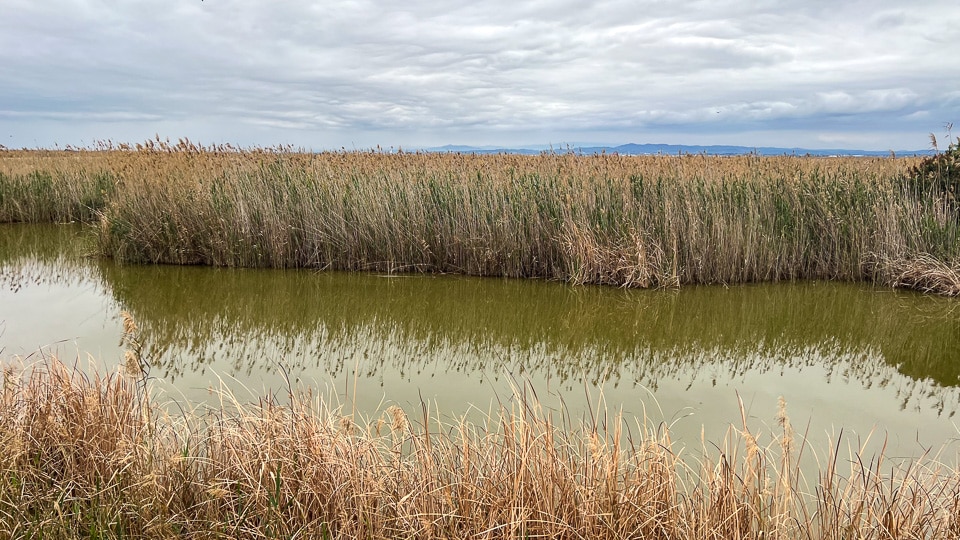
L’Albufera Lake and Natural Park. One of the crown jewels of the Valencia region is L’Albufera de Valencia, or Lagoon of Valencia. This freshwater lake (formerly saltwater) and surrounding estuary area covers more than 50,000 acres. The reserve protects flora and fauna, particularly fish and birds.
The Albufera’s importance is based on both fishing and agriculture. The dilution of the saltwater lagoon came about after irrigation canals and natural sand bars changed the shores. Rice growing here is still viable, and fishing continues both as an industry and recreation. The lake is a popular place for Valencianos to escape for a quiet afternoon float in a boat, with picnics or visits to local restaurants. While locals do day trips to the lake, we recommend a stay at the Parador de El Saler, located in the heart of the Albufera Natural Park. From the hotel's doorstep, guests can enjoy nature trails for all abilities, bird-watching, and beach-combing. See more in the hotel listings below.
Note: The wildlife and water quality of the L’Albufera area is being closely monitored since the floods of October 2024 when lagoon water levels went up a meter.
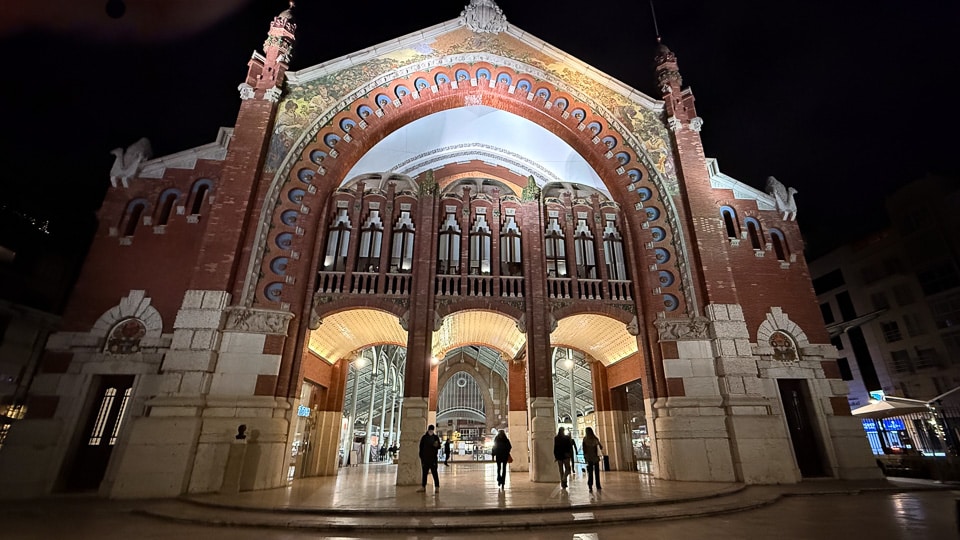
Shopping
Colón. Central Valencia's main shopping district is around the Colón metro stop. Here you'll find Spain's leading department store, El Corte Ingles (both fashion and home locations), plus international brand stores and popular Spanish merchants. Find plenty of places to stop and refuel along the shopping streets or at the nearby Mercado Colón.
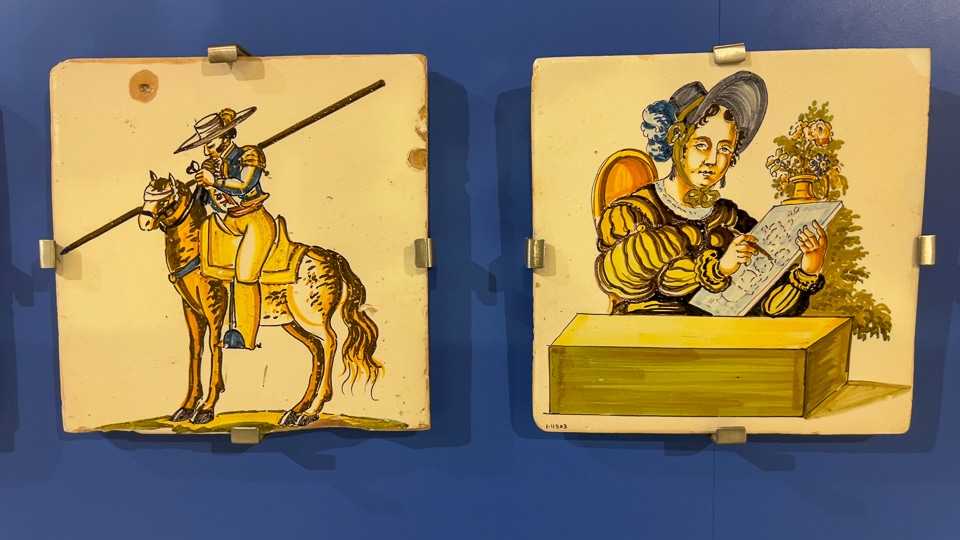
For local artisan products, beyond the big markets mentioned above, you’ll find many independent merchants and boutiques in the Carme neighborhood. This is in the northwest part of the historic center, running roughly from Plaza del Carmen down to the west side of the Cathedral. Here are some nice shops of interest:
Albanicos Vibenca. Hand painted fans, on Plaza Lope de Vega.
El Raconet de la Cerámica Ceramica Valenciana. Traditional hand-painted tiles, Valencian style or made to order. This is where we learned that the typical brown style dating from the 14th and 15th Centuries is called Socarrat, the same word given to the delicious, lightly scorched rice at the bottom of the paella!
Sombreros Albero. Hats and caps for men, women and children. Various locations, including one on Plaza Lope de Vega near the fan shop.
Plaza Redonda. Restored in 2012, this 19th Century open air circular arcade features artisan crafts and tapas bars. Find antique book stores nearby.
Bars, Restaurants, Cafes
Valencia's culinary prowess is found not only in its homegrown dishes and drinks, but in its array of international restaurants and dishes. Perhaps more than any other Spanish city, Valencia is well supplied with Asian, European, South American and other world cuisine restaurants. For uniquely Valencian fare, besides paella, look for horchata (spelled orxata in Valenciano). It's a refreshing drink made of local tiger nuts. We ordered it over ice with no sugar added for a more refreshing version. Pastries particular to Valencia include the fartón, a breadstick-shaped sweet bread, and the fluffy pumpkin buñuelos, sort of a light donut or beignet cake, best shaken in sugar for an extra melt-in-the-mouth experience. One more local favorite is a breakfast sandwich called Esmorzaret Valenciano. Check out this reference guide to Valencia's local dishes.
Cafés, Pastries, Horchata
Horchatería Santa Catalina. For the iconic pumpkin buñuelos, especially popular during the Fallas festival. And for their horchata. And for churros. Or for the delicate local farton pastry. Try them all. The main location is known for its ceramic tiles. We visited (twice) the window take-away counter on Plaza de la Reina in front of the Cathedral. It may be eclipsed by its next door neighbor, the bustling Bertal Homenatge Café. But stick with the plan and get a buñuelo from Santa Catalina.
Horchateria Daniel. This historic family-run place displays a photo of one-time guest Salvador Dali on its menu cover, and we have no doubt dozens of other celebs have been here, too. We like the location on Calle del Mar in the center; there's another location at Mercado Colón.

Paella
A note about reservations: most good paella restaurants will require reservations, and some restaurant websites are not in English. Have your hotel call for reservations, and be prepared to let them know which paella you will be ordering. We prefer a mid-day paella. Dinner reservations generally start at 8 p.m.
Casa Carmela. Perhaps the most sought after paella in town, because it's cooked over wood fires – and happens to have been featured in a Jose Andres show. Take a walk on the seaside boardwalk before or after your meal.
Casa Roberto A solid old-style restaurant that focuses on paella. We selected a seafood paella here and gave it top marks.
Arrosseria Flor de Valencia. A relaxed neighborhood restaurant that served our whole family our first true and delicious Paella Valenciana.
Valencia Club Cocina. Cook it and eat it. See more under Food and Markets above.
Restaurante Levante Valencia Like Casa Carmela, Levante makes all the top lists. The original restaurant is a bit of a distance out of town, but this serves the city folk.
Nou Racó Nou Racó is in an event center with a primo location on L’Albufera Lake. Here we ate a popular local variation of paella, fideuá, made with short noodles instead of rice. Note: Marinera or mariscos paella indicates seafood cooked and served with shells. The “senyoret” style is served already shelled.

Ruzafa neighborhood
Dos Estaciones. A highly awarded restaurant focused on fresh local ingredients and an inventive menu that changes with each of the four seasons.
La Cantina de Ruzafa. A real local joint with delicious fresh made food. We felt we'd stumbled into a secret rebel hang-out, and were treated to the chefs' original art on the walls.
Assorted Recommendations
El Colmada de laLola and Restaurant LaLola. Step into Colmada for the tapas and sherry or any selection from their nice wine list and deli counter. We felt at home in the Andalucían atmosphere. LaLOLA restaurant with a full menu is around the corner.
Restaurante Vuelve Carolina and Llisa Negra. Two highly rated restaurants in the center, the first serving fine global cuisine and the other featuring seafood and wood-fire grilled meats. We list them here lest we forget. They come highly recommended (by Kris's taxi driver who usually prefers to cook at home), but we haven't been there yet.
Restaurante Mascaraque. A remarkable, chef-driven restaurant at IVAM Art Institute.
Federal Café. Wonderful breakfasts outside the hotel.
Casa Vani. Well-executed classic tapas and a friendly vibe.
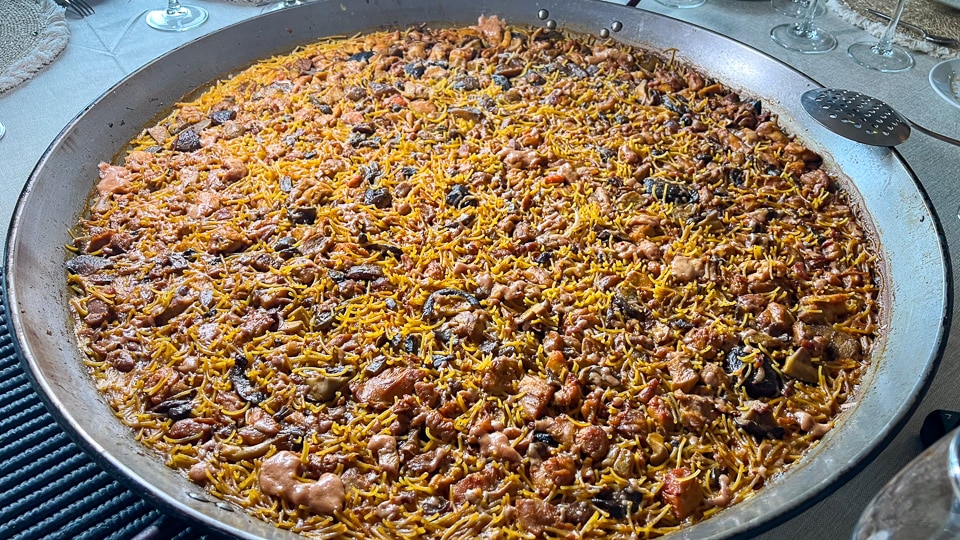
International Cuisine
Given its decidedly international population, Valencia excels at offering diverse cuisine. You don't have to look hard to run across foods from around the world.
Kathmandu. Indian Nepali cuisine. Highly rated. Our order veered toward overly rich dishes, but we’ll return to give it another try.
Delicias del Libano. A happy accident finding light Lebanese dishes which we enjoyed in the leafy Plaza del Doctor Collado serving several eateries.
Where to Stay
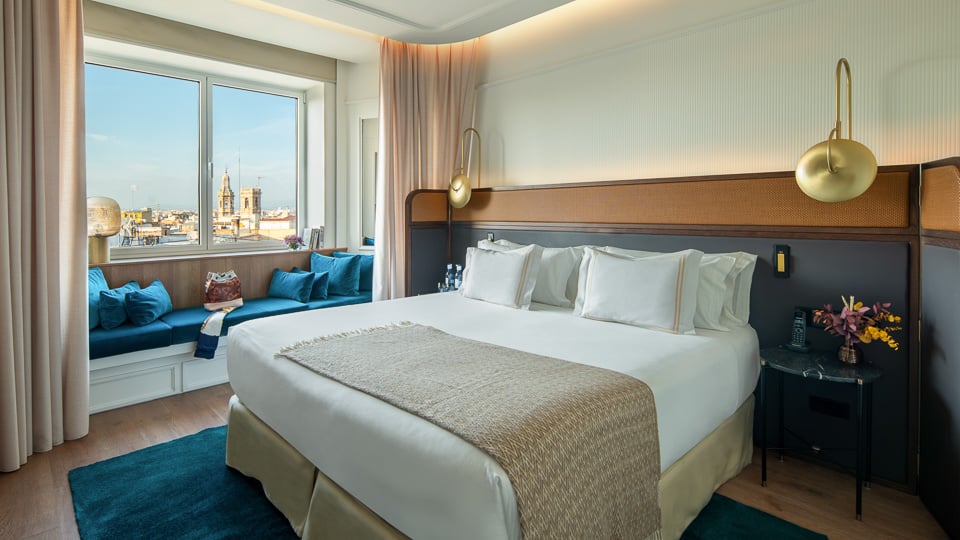
Only You Hotel. We enjoyed our large comfortable room and the ambiance of the hotel bar and lobby so much, we returned for a second stay. Perfectly located in the historic center, on a friendly little plaza. Nice city views from the 9th floor breakfast and dining room.
Petit Palace. Also a nice central location, from a brand we trust.
Exe Rey Don Jaime Eurostars Hotel is a fine location across Turia from the old city center, but an easy walk to the City of Arts and Sciences. https://www.eurostarshotels.com/exe-rey-don-jaime.html?
Parador El Saler. Part of Spain's national hotel group. (The Paradors are consistently top-notch, located in significant locales such as historic palaces or in more modern buildings in dramatic settings.) Parador de El Saler is unique, located on an island, essentially, between the Albufera sweetwater lagoon and the Mediterranean Sea. El Saler is well-worth a visit – for its 18-hole golf course, for beach access, for nature trails and bird watching, and also to see how this resort hotel operation fits into Valencia's commitment to sustainable travel. On our brief tour of the hotel (after a fun morning of golf), we were impressed by the seamless conservation efforts: protecting turtles, practicing renewable energy with solar panels, reusing 100% of hotel water for irrigation, and collaborating with local businesses for restaurant and other hotel products. Bonus points for using recycled materials for custom furniture, and even recycling golf balls! Someone in our group may have contributed a couple.
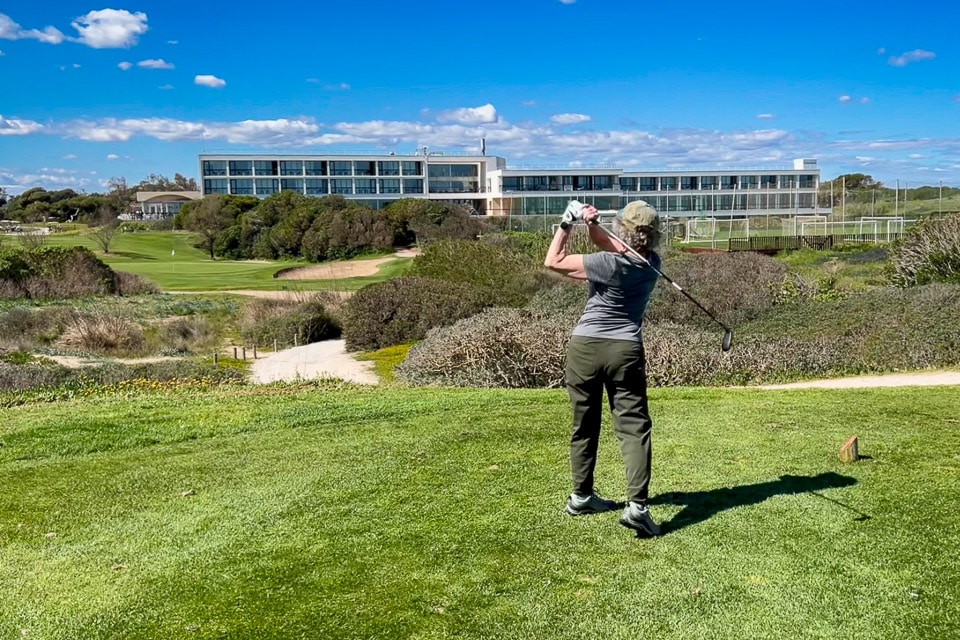
Novotel. If you are with a larger group needing a more business-style hotel, this may be our choice. Not in the center, but adjacent to a little shopping center with El Corte Ingles and the usual restaurants. About 15 minutes walk to the cathedral.

How to Get There
Valencia Airport (VLC) also known as Manises Airport, is primarily busy with links to European airports. But Delta has flown direct to VLC from New York since 2009. The airport is only about five miles from city center. Another airport in Alicante also services the Valencian Community Autonomous Region.
Spain's excellent train system serves Valencia. The AVE highspeed train from Madrid's Chamartin station takes just about two hours.
The Spain Tourism website is the best resource for discovering places that match your interests and timetable. Visit their “Getting Around Spain” page to considers all your options.
Note: We've also reported on the food and highlights of Valencia for Travel Writers Radio. Tune in to this two-part discussion of the essence of Valencia for visitors.
Listen to Part I of Kris's deep dive into Valencia here.
Listen to Part II of Kris's Valencia report here.
To discover all the stories Kris has reported for radio and podcast – covering dozens of destinations around the world – visit our Audio Page.
Up Your Travel Skills
Looking to book your next trip? Use these resources that are tried and tested by us. First, to get our best travel tips, sign up for our email newsletter. Then, be sure to start your reading with our Resources Page where we highlight all the great travel companies and products that we trust. Travel Accessories: Check out our list of all the accessories we carry to make getting there and being there a lot easier. Credit Cards: See our detailed post on how to choose the right travel rewards credit card for you. Flights: Start finding the very best flight deals by subscribing to Thrifty Traveler. Book your Hotel: Find the best prices on hotels with Booking.com. See all of the gear and books we like in one place on our Amazon shop.Got a comment on this post? Join the conversation on Facebook, Instagram, or Threads and share your thoughts!

